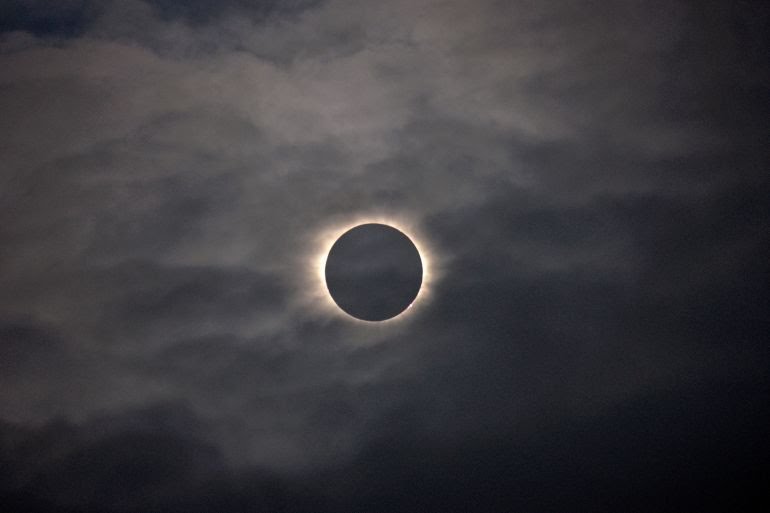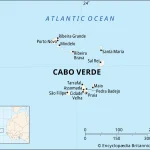
Mexico, U.S. and Canada Experience Total Solar Eclipse on Monday

A rare total solar eclipse dazzled spectators as it swept across Mexico, the United States, and Canada on Monday, April 8. The phenomenon, known as the “path of totality,” traced its path from the Pacific coast of Mexico to the Atlantic coast of Canada.
A total solar eclipse occurs when the Moon passes between the Sun and Earth, blocking out the Sun’s light entirely or partially. This creates a temporary darkness during the day as the Moon casts its shadow on Earth.
The Pacific coast of Mexico was plunged into complete darkness at 11:07am local time (1807 GMT). CNN live reports show that in Mexico, the sparkling beaches of Mazatlan were engulfed in darkness as the eclipse reached its peak. These intrigued millions of people who were stargazing.
The eclipse’s journey continued into the United States. Cloudy skies threatened to obscure the spectacle in some areas along the path from Texas to Maine. Major cities including Dallas, Austin, Indianapolis, Cleveland, and Niagara Falls found themselves in the eclipse’s shadow.
“In the US, an estimated 32 million people were in the path of totality and a total solar eclipse could be visible in Texas, Oklahoma, Arkansas, Missouri, Illinois, Kentucky, Indiana, Ohio, Pennsylvania, New York, Vermont, New Hampshire and Maine, although weather threatened to spoil the fun for some”, CNN reports.
As crowds gathered along the Pacific coast of North America to witness the rare event, authorities made preparations to manage the influx of tourists and potential disruptions. State of emergency declarations were issued in various regions, including Essex County and Oswego County in New York, to address anticipated challenges such as increased traffic and possible cell service disruptions.
Governors across affected states, including Indiana and Arkansas, took measures to ensure readiness for the eclipse’s impact. These declarations enable access to resources and assistance from federal agencies like FEMA.
While the eclipse offered a mesmerizing experience for those within its path of totality, its impact extended beyond the celestial realm. Cities across the Lower 48, both within and outside the path of totality, experienced significant temperature drops, accompanied by a rise in humidity as the moon obscured sunlight.
As the eclipse concluded its journey across the United States, the partial eclipse lingered for a short while longer before eventually fading away. According to NASA, the next total solar eclipse will be in August 2026 and will be visible in Greenland, Iceland, Spain, Russia, and a small area of Portugal. Until August 22, 2044, however, a total solar eclipse would not be visible again from the contiguous US.
See the live update here.
Read: “Proposed NLC Stakeholders Meeting A Jamboree By Drama Boys and Attention-seekers” – Labour Party
About The Author
Related Articles
Benin and Niger Relations Deteriorate Further as Diplomatic Expulsions Escalate
Diplomatic relations between Benin and Niger have sharply deteriorated following a series...
ByWest Africa WeeklyJanuary 5, 2026Nigerian Air Force Confirms Crash of CH-4 Combat Drone in Niger State
The Nigerian Air Force has confirmed that one of its CH-4 combat...
ByWest Africa WeeklyJanuary 5, 2026Mali Survive Shootout Against Tunisia, Set Up Senegal Showdown
Mali advanced to the quarter-finals of the Africa Cup of Nations after...
ByWest Africa WeeklyJanuary 5, 2026Nigerian Banks Shut Down 229 Branches as Cost Pressures and Digital Shift Deepen
Nigeria’s banking sector has witnessed a significant contraction, with commercial banks shutting...
ByWest Africa WeeklyJanuary 5, 2026












Leave a comment